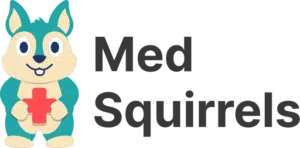Retaining RNs: how to boost their morale and reduce turnover

Nurse turnover is the rate at which registered nurses leave the current workforce of a facility. A higher nurse turnover rate indicates dissatisfaction among the registered nurse workforce with regard to the work environment, culture, and team dynamics at a facility. According to the US Bureau of Labor Statistics around 1,94,500 registered nurse job openings are projected each year over the next decade as the demand for nurses increases due to the increased nurse turnover rate. The Health workforce analysis report states that there is a projected shortage of 78,610 across the USA.
Understanding the nurse turnover rate and the reason for the turnover is important to take necessary actions for staff retention. Empirically, the RN turnover rate for a particular period can be found by taking the ratio between the exited workforce during that period and the average number of newly hired RNs in the same period. The cause of nurse turnover can be understood by conducting exit interviews where the registered nurses leaving the organization will be interviewed to understand why they are leaving the organization, and whether there is any recurring reason that influences the employees to leave the facility. The primary cause for nurse turnover is staff burnout driven by heavy workloads due to the increased staff gap in meeting the increasing patient demand. According to a report by the Journal of nursing regulation around 25.8% of the registered nurses experience burnout from their daily work, which causes the registered nurses in the US to leave their profession.
The impact of nurse turnover on patient care and facility operations
Nurse turnover can cause a considerable cost for the facilities as they need to fill the staffing gap by hiring new registered nurses. The cost of turnover in healthcare is mainly associated with the expense of recruiting and onboarding new candidates. Moreover, the compliance check processes, onboarding, and scheduling training programs for the new hires can lead to a substantial administrative workload on the facility. Also, hiring registered nurses can disrupt the current workflow of the existing staff and hinder the team dynamics within the facility, which can affect operational efficiency.

Though enrollment in entry-level baccalaureate programs in nursing increased by 0.3% in 2023, AACN did report drops in both PhD and master’s nursing programs by 3.1% and 0.9%, respectively.
These trends are raising concerns about the capacity of nursing schools to meet the projected demand for nursing services, including the need for more nurse faculty, researchers, and primary care providers.
Source: Journal of Nursing Regulation
A high turnover rate can compromise patient care quality as there will be a shortage of skilled registered nurses to meet the patient’s demands. According to a study published by the National Institutes of Health the Registered Nurse turnover is recorded at 18%.
Clearly, there is a shortage of registered nurses in the USA, and this causes an increased workload for the existing staff in the facility, leading to burnout among them.
Staff shortage can lead to improper staff scheduling and extended shifts, which can force the registered nurses to work overtime. This not only incurs huge overtime costs to the facility but can affect patient care quality as overworked staff tend to make more errors, risking patient safety. Furthermore, inadequate staffing can cause longer waiting times for patients, even in emergency departments, which can impact the quality of care. Eventually, high turnover in healthcare facilities can lead to reputation damage, and create hurdles when you want to hire registered nurses for your facility.
Factors driving high nurse turnover rate
Before diving deeper into the strategies to retain the current registered nurse workforce in your facility, it is important to understand the causal factors that have led to the increased RN turnover rate in your facility. Registered nurses play a critical role in the healthcare sector and constitute the major proportion of the total healthcare workforce in the USA.
As per the National Center for Health Workforce Analysis report, four million active RNs were present across the USA in 2022. However, their demand is increasing yearly due to the huge nurse turnover rate.
The most prevalent challenge discussed across the healthcare sector is nurse burnout. The COVID-19 scenario has specifically given rise to a tremendous increase in burned–out nurses due to the long hours, extended shifts, and stressful work conditions the registered nurses had to work. This caused some to retire early while others shifted their profession, leading to a mass attrition rate in the healthcare sector. The Nursing Workforce Fact sheet specifies that most registered nurses are aged in the median range of 46 years, and more than a quarter of them have reported a plan to quit the workforce in the next five years.
Yet another contributing factor to the RN turnover rate is the incompetent compensation paid to the registered nurses. In cases where contract nurses are hired through a staffing agency, huge markup fees are usually levied from the healthcare facility. A significant portion of the registered nurses’ bill rate will constitute the markup fees, and this can lead to underpaid staff. Other contributing factors for nurse turnover include limited career development opportunities, poor work-life balance, toxic work environment, etc.
The rising demand for RNs in Washington
According to theNursing Workforce Projections Factsheet Washington has the largest projected shortage of registered nurses by 2035 with over one million people to leave the workforce in the next ten years.
Washington state centre for nursing factsheet has published a detailed report which points out the demand-supply gap of registered nurses in Washington state. The shortage of registered nurses in Washington state is due to the non-renewal of existing licenses, transfer of registered nurses to different occupations, etc. Also, there hasn’t been a significant increase in the graduation rate of registered nurses from nursing schools. All these factors, along with the aging population growth, have created a rising demand for registered nurses in Washington.
Projected supply and demand for registered nurses and other roles in 2025 & 2030

Source:National Center for Health Workforce Analysis
Retention strategies to reduce nurse turnover
Properly addressing the causal factors discussed above can reduce the nurse turnover rate significantly and help you quickly hire registered nurses. Having exit interviews with the leaving workforce is an excellent measure of understanding the reason behind the nurse turnover. However, collecting timely feedback from the current workforce to understand the areas of improvement can help prevent nurse turnover to a greater extent. Likewise, here are some retention strategies you can implement beforehand to reduce the staff turnover rate at your facility.
- Ensure there are adequate registered nurses in each department of your facility to mitigate the risk of having overworked staff.
- Provide flexible shift options to hire registered nurses to improve job satisfaction.
- Offer competitive compensation to the registered nurses to attract and retain them. Also, ensure to revise the compensation at regular intervals to stay on top of the staffing market.
- Along with salary, offer a comprehensive compensation package that includes additional perks such as paid time off, adequate health insurance, retirement plans, etc.
- Provide opportunities for career development by supporting registered nurses in getting specialized certifications and providing training opportunities for skill development.
- Set a clear career progression pathway and communicate the performance evaluation criteria with the employees to ensure fair career progression.
- Establish mentorship and various training programs to equip the newly hired registered nurses to work alongside your current staff. Mentorship programs can be hugely beneficial when you hire newly graduated registered nurses. This can reduce errors.
- Provide cross-training opportunities to registered nurses working in your facility. While cross-training helps registered nurses update their skill sets, it makes their job more exciting and novel.
- Have a mechanism to regularly collect feedback from your existing staff. Make sure that everyone feels safe to voice their views.
- Promote a diverse and inclusive workforce where everyone including the registered nurses and other allied healthcare professionals have a sense of belonging.
- While hiring registered nurses, check whether they are culturally fit for your facility. Culture-fit candidates are found to stay longer in a facility.
- Build a strong employer brand so that it would be easy to attract top talent to your facility.
Leveraging staffing agencies to create competitive compensation and benefits
To create a comprehensive compensation structure to hire RNs, healthcare facilities can try associating with registered nurse staffing agencies. These agencies help devise strategies to attract skilled registered nurses to your facility. They can streamline the overall RN hiring process and can help you frame competitive benefits packages for your registered nurses. However, proper care needs to be taken while associating with registered nurses staffing solutions to ensure you are on the right track.
To hire registered nurses, these staffing agencies charge high markup fees, leading to higher bill rates, which can force you to spend above your budget.
Here are some things to consider while associating with a registered nurse staffing solutions provider.
- Ensure that the staffing agency has a good reputation and experience in the registered nurse staffing industry.
- Verify the terms and conditions listed in the contract to hire registered nurses.
- Ensure you get complete transparency into each stage of the recruitment and onboarding process.
- Be clear about the pricing model and the markup fees levied from your facility.
- Prefer staffing agencies that leverage technology to simplify the recruitment process and this can limit errors in the compliance process.
- Ensure you get proper support and guidance throughout your collaboration with the staffing agency.
Conclusion
MedSquirrels is a healthcare staffing solutions platform leveraging technologies like AI and automation to streamline the entire RN recruitment process. With reduced human intervention, we ensure that our process to hire registered nurses is error-free and cost-effective. Unlike other traditional registered nurse staffing agencies, we do not charge markup fees for hiring a registered nurse.
MedSquirrels provides complete transparency in our pricing by charging only a flat license fee for using our platform, along with the payroll cost of the registered nurses hired through us.
MedSquirrels also offers various plans to choose from: Orange plan for contract RN hiring + payrolling; Purple plan for payrolling of contract RNs; and Blue plan for hiring permanent registered nurses. To know more details of our plans to hire registered nurses, book a demo today.
Jani Basha is a healthcare staffing expert at MedSquirrels, writing insights on staffing trends, hiring best practices, and career growth for healthcare professionals.
